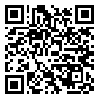Volume 6, Issue 4 (December 2021)
J Environ Health Sustain Dev 2021, 6(4): 1476-1493 |
Back to browse issues page
Download citation:
BibTeX | RIS | EndNote | Medlars | ProCite | Reference Manager | RefWorks
Send citation to:



BibTeX | RIS | EndNote | Medlars | ProCite | Reference Manager | RefWorks
Send citation to:
Fallah Ghalhari G, Farhang Dehghan S, Akhlaghi Pirposhteh E, Asghari M. Trend Analysis and Temporal and Spatial Distribution of Wet Bulb Globe Temperature as a Heat Stress Index in Iran during the Summer Season over a 30-Year Period. J Environ Health Sustain Dev 2021; 6 (4) :1476-1493
URL: http://jehsd.ssu.ac.ir/article-1-371-en.html
URL: http://jehsd.ssu.ac.ir/article-1-371-en.html
Department of Occupational Health and Safety Engineering, School of Public Health, Arak University of Medical Sciences, Arak, Iran.
Abstract: (2311 Views)
Introduction: Global warming is one of the most important environmental problems that have raised researchers’ attention. The present study aimed to analyze heat stress trends using the Wet Bulb Globe Temperature (WBGT) index in the country of Iran during the summer over a 30-year period.
Materials and Methods: Daily summertime statistical data regarding mean temperature and mean relative humidity, taken from 40 synoptic meteorological stations across Iran during a 30-year period were obtained from the Iranian National Meteorological Department. The De Martonne climate classification system was used to categorize various climate regions of Iran. The WBGT index was calculated using the formula given by the Australian Bureau of Meteorology. The Mann-Kendall statistical test and the Sen's slope estimator were used to analyze the trends of the WBGT index.
Results: The WBGT index had an upward trend during the three months of June, July, and August in 71.42%, 57.14%, and 66.66% of all stations and this trend was statistically significant in 53.32%, 50%, and 42.85% of those stations, respectively. Moreover, throughout the summer, 45% of the WBGT index measurements were in the medium range (18-23°C), 37.5% were in the high range (23-28°C), and 17.5% were in the very high range (> 28°C).
Conclusion: The WBGT index followed an upward trend during the summer, especially in semi-arid regions of Iran. Considering the phenomenon of global warming, it is essential to monitor, plan ahead, and take necessary precaution measures for sensitive populations who are at high risk areas of the country.
Materials and Methods: Daily summertime statistical data regarding mean temperature and mean relative humidity, taken from 40 synoptic meteorological stations across Iran during a 30-year period were obtained from the Iranian National Meteorological Department. The De Martonne climate classification system was used to categorize various climate regions of Iran. The WBGT index was calculated using the formula given by the Australian Bureau of Meteorology. The Mann-Kendall statistical test and the Sen's slope estimator were used to analyze the trends of the WBGT index.
Results: The WBGT index had an upward trend during the three months of June, July, and August in 71.42%, 57.14%, and 66.66% of all stations and this trend was statistically significant in 53.32%, 50%, and 42.85% of those stations, respectively. Moreover, throughout the summer, 45% of the WBGT index measurements were in the medium range (18-23°C), 37.5% were in the high range (23-28°C), and 17.5% were in the very high range (> 28°C).
Conclusion: The WBGT index followed an upward trend during the summer, especially in semi-arid regions of Iran. Considering the phenomenon of global warming, it is essential to monitor, plan ahead, and take necessary precaution measures for sensitive populations who are at high risk areas of the country.
Type of Study: Original articles |
Subject:
Environmental Health, Sciences, and Engineering
Received: 2021/09/3 | Accepted: 2021/11/20 | Published: 2021/12/29
Received: 2021/09/3 | Accepted: 2021/11/20 | Published: 2021/12/29
Send email to the article author
| Rights and permissions | |
 |
This work is licensed under a Creative Commons Attribution-NonCommercial 4.0 International License. |








